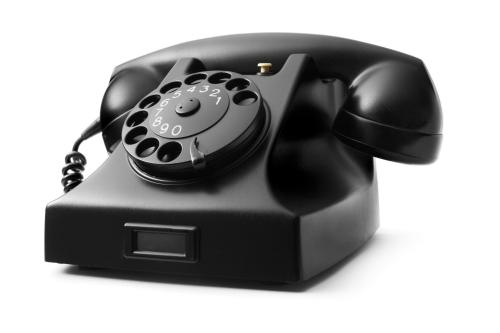As a self-confessed (and proud) storyteller, I discovered in a university storytelling workshop that stories are a powerful tool for explaining complex concepts. Since then, I have been translating concepts into stories almost without realising it. When I entered the world of B2B business development, one of my first challenges was to understand sales channels. Today, I invite you to explore them with me, as if we were characters in stories you already know… but with a commercial twist.
The direct channel: the moral of the story of Jack and the Beanstalk
This channel is the classic of classics, the best known and most glamorous: the Kardashian of sales channels. In it, the transaction between company and customer takes place without intermediaries, allowing complete control over the sales experience.
Like Jack, who took his cow to market and sold it directly to a mysterious old man who, instead of money, offered him a bag of magic beans. Profitable? Very much so. Was there a risk? Yes. Juan could have sold his cow to another merchant, but by doing so directly, he kept the entire margin (they were magic beans! Who could resist?). Of course, he also assumed all the responsibility: caring for the cow, transporting it, finding customers, negotiating the price and assuming the costs of the process.
In other words, the direct channel involves having your own shops (the market stall), well-trained sales teams with the right tools (to promote the cow properly), and customer management that allows for personalised and consultative service (why did the old man want the cow?).
This channel requires investment, but it offers proximity, control and differentiation, which are essential for customer control and loyalty. However, its major handicap comes with the fixed cost and labour liabilities that you have to assume within your P&L, so it is usually focused on the management of strategic customers for companies that are already well established in a sector.
The indirect channel: Cinderella and her glass slipper
If what you need is greater reach with less investment, the indirect channel may be your best ally. It is ideal for quickly scaling up the distribution of your products or services, taking advantage of the network of third parties that act as intermediaries.
As in the story of Cinderella: the prince had an irresistible offer (royal marriage!) designed for a very specific customer profile (Cinderella). But did he have the time and resources to travel the entire kingdom himself? No. So what did he do? He delegated the search to his servants, who took the product (the glass slipper) to potential customers (young women of marriageable age) until they found the right one.
In other words, this channel translates into authorised distributors, retailers or integrator partners who sell your services on your behalf. But, like the prince, you cannot entrust this mission to just anyone. You must select your allies carefully, give them the necessary tools (product information, training, support) and ensure that the end customer knows that you are behind the proposal (brand, after-sales service, guarantees, etc.).
For all the above reasons, the indirect channel is usually used in stages of rapid development of a company, seeking to be in many places in a short time and with a 100% variable cost based on sales… you bring me Cinderella and I’ll pay you a commission. The problem may lie in the risk of fraud, as there was only one Cinderella, but there are plenty of stepsisters.
The digital channel: Aladdin and the magic lamp
If you want to give your customers total freedom, you need more than just a nice shop: you need a magic lamp. Or, in other words, a digital channel. The customer asks for what they want, and boom! They’ve got it.
The digital channel offers a smooth, fast and autonomous experience. The customer browses, compares, chooses and buys without leaving home. But as in the story, the magic only works if the lamp is well designed. Imagine if, instead of rubbing it, Aladdin had to register on an external platform, search for his wish in an endless catalogue, upload his market thief contract, restart the lamp because it crashed, and end up on a Chinese website selling faulty lamps… He would have thrown the lamp into the first thieves’ cave he came across.
That’s why having a well-managed website and an intuitive app is like having the genie in the palm of your hand. The digital channel allows you to automate sales (with its savings), scale without limits, and obtain valuable data to improve services and build your brand. And now, with artificial intelligence, virtual assistants and mobile self-management, the genie no longer asks ‘What is your wish?’… it simply anticipates it.
It is a complementary and more economical channel. It is ubiquitous, so sales can happen anywhere, anytime. Of course, as was the case with Aladdin, not everyone trusted that the wishes they asked for would be granted, so it is important to bear in mind that one of the problems with this channel is the lack of trust in this type of sale.
Omnichannel: The Wizard of Oz of sales
This is the true reality of modern sales: when your goal is to get to know your customer thoroughly, tailor your product or service to their needs, communicate the right information, have sufficient reach, control margins, innovate in processes and, of course, satisfy the end customer, you need to work with omnichannel.
Like Dorothy on the yellow brick road, you cannot reach your destination alone. You need allies who represent the different strengths of your channels:
- The Tin Man, with his heart, is your direct channel: close, emotional, personalised.
- The Lion, with his courage, represents the indirect channel: he gives you reach and strength through third parties.
- The Scarecrow, with his intelligence, is your digital channel: automated, agile and full of data.
When you correctly combine the characteristics and benefits of each channel, you create a consistent, fluid experience tailored to each customer. In your business, this means that the customer can start their purchase on the website, receive advice via chat, finalise the contract in-store and manage their service from an app. Everything connected, everything integrated.
Because in sales, as in Oz, the real power lies in the team… and in knowing how to use each channel at the right moment.







